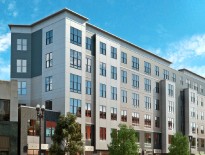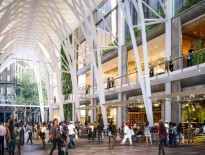Many Bay State cities and towns eagerly publicize their local affordable housing projects. The city of Lynn took a different approach when it established two housing development (HD) zones under the Massachusetts Housing Development Incentive Program (HDIP) to attract multi-unit market rate housing.
The Massachusetts legislature adopted the HDIP in 2010 as General Laws chapter 40V, to diversify housing, stabilize neighborhoods and expand economic development in “Gateway municipalities.” Under statute, Gateway municipalities are cities and towns, such as Lynn, having populations between 35,000 and 250,000 with median household incomes and education levels below the state average. The Department of Housing and Community Development (DHCD) administers the HDIP.
The process starts when a Gateway municipality submits a development plan to DHCD designating an HD zone for multi-unit market rate housing. Upon DHCD approval, the municipality may offer reduced real estate taxes to developers for periods lasting from five to 20 years. Qualifying projects must consist of at least 80 percent “market rate units,” which are residential units priced for households earning above 110 percent of the area’s household median income.
Generous tax incentives tempt HDIP developers. In addition to reduced real estate taxes, projects certified by DHCD qualify for income tax credits of up to 10 percent of project costs. These tax credits are assignable and can be carried forward if they exceed the developer’s income in the year the credit is awarded. The credits can be used in conjunction with tax credits available for historic property rehabilitation. Nearly 500 housing units in seven different projects have been created under the program so far, with some 300 more units expected in 2017.
Lynn Looks To The Future
With 23 percent of its housing classifiable as affordable, Lynn seeks residents who will pay market rents for housing and expand the local economy. Lynn’s HD zones, situated in its central business district and along its waterfront, were established to encourage housing development for such urban pioneers. DHCD approved Lynn’s HD zones in 2015, and the first project with 49 market rate units was approved last month for the downtown Flat Iron Building. The completed project will provide 49 market rate units, with first-floor restaurants. In addition, groundbreaking is expected this year for a 350-unit project at the 14-acre Beacon Chevrolet site on the Lynnway. Minco Development, the site developer, has expressed interest in seeking HDIP certification for the project.
Future residents of this new housing will enjoy noteworthy amenities. Downtown Lynn is a 22-minute commuter rail trip from North Station. The Lynn Shore and Nahant Beach Reservation offers miles of shoreline recreation. The Lynn Woods is a 2,200-acre municipal forest park with 30 miles of trails. Lynn’s Memorial Auditorium, ensconced within city hall, attracts well-known performers and appreciative audiences. Restaurants such as Blue Ox and Rossetti serve world-class cuisine to diverse diners.
Jim Cowdell, a life-long resident of Lynn and executive director of its Economic Development & Industrial Corp., enthusiastically promotes his city: “Next year we will see over $100 million in new developments. Lynn is now on the radar for major investors. In the very near future you will see our waterfront developed with beautiful mixed-use projects, and 2017 will see our downtown become the home for 50 new residents. Lynn is on the move and we are very excited for our future.”
Lynn’s future will brighten further if proposed public transportation initiatives become a reality. Lynn’s state senator, Thomas McGee, is the chairperson of the legislature’s Temporary Joint Committee on Transportation. He sees opportunities in Lynn’s waterfront and commuter rail line.
Lynn offered seasonal ferry service to Boston as a pilot program in 2014 and 201,. Sen. McGee wants to restore the ferry. The 350-unit development at the Beacon Chevrolet site could produce a critical mass of commuters supporting year-round ferry service to Boston’s congested Seaport District. His dream to extend the MBTA’s Blue Line to Lynn, using the commuter rail’s right of way, could be attainable.
Savvy real estate investors try to anticipate the next underappreciated community where properties values will quickly rise. With HDIP tax incentives and a little love, Lynn could become that community.









